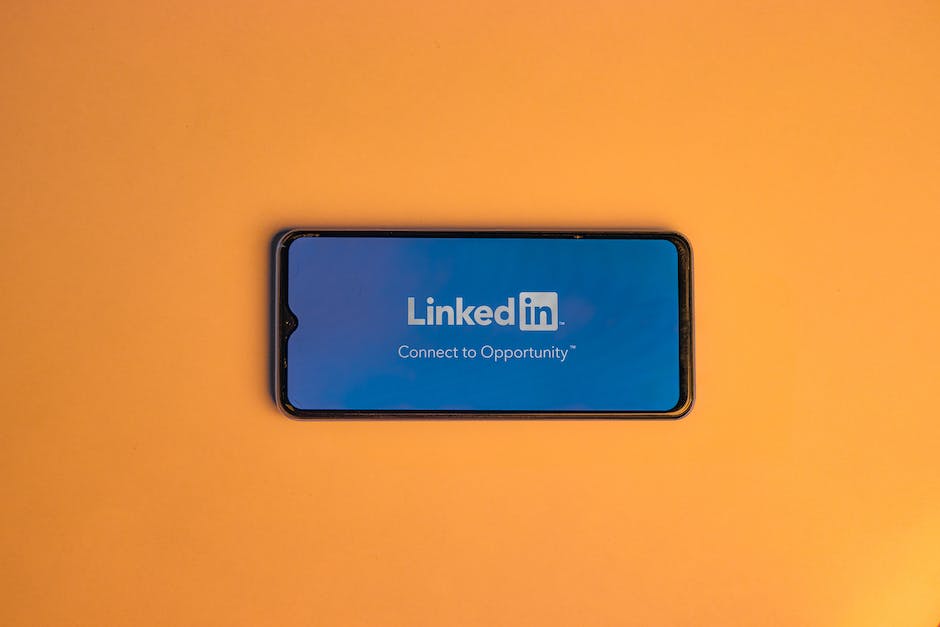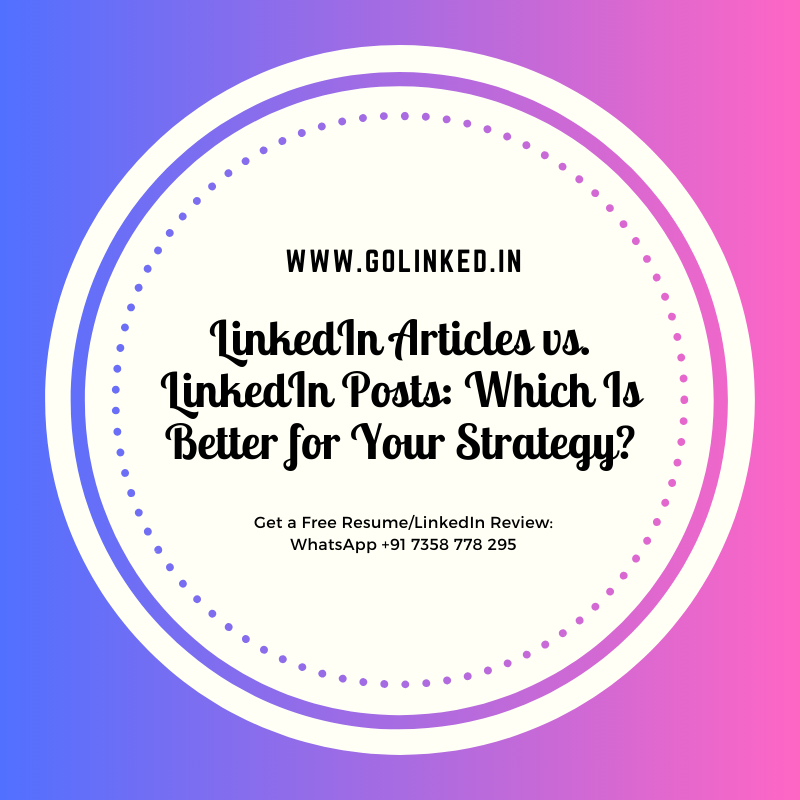LinkedIn Articles vs. LinkedIn Posts: Which Is Better for Your Strategy?
Introduction
LinkedIn is a popular professional networking platform that offers users the ability to share content and engage with their connections. Two common ways to share content on LinkedIn are through articles and posts. LinkedIn articles are longer-form pieces of content that allow users to delve into a topic in more depth, while LinkedIn posts are shorter updates or thoughts that can be shared more frequently. Both options have their own advantages and can be effective for different strategies. In this article, we will explore the differences between LinkedIn articles and posts, and help you determine which option may be better suited for your specific goals and objectives.
Pros and Cons of LinkedIn Articles for Your Strategy
LinkedIn Articles vs. LinkedIn Posts: Which Is Better for Your Strategy?
When it comes to leveraging the power of LinkedIn for your business strategy, there are two main options to consider: LinkedIn articles and LinkedIn posts. Both have their own unique advantages and disadvantages, and understanding these can help you make an informed decision on which one is better suited for your specific goals.
Let’s start by exploring the pros and cons of LinkedIn articles. One of the biggest advantages of publishing articles on LinkedIn is the ability to showcase your expertise and establish yourself as a thought leader in your industry. Articles allow you to delve deeper into a topic, providing valuable insights and analysis that can position you as an authority figure. This can be particularly beneficial if you are looking to build your personal brand or attract potential clients or partners.
Another advantage of LinkedIn articles is the potential for increased visibility. When you publish an article, it is shared with your connections and followers, giving it a wider reach compared to a regular post. Additionally, LinkedIn’s algorithm tends to prioritize articles in the newsfeed, increasing the chances of your content being seen by a larger audience. This can be especially advantageous if you are looking to generate leads or drive traffic to your website.
However, there are also some drawbacks to consider when it comes to LinkedIn articles. One of the main disadvantages is the time and effort required to create high-quality, long-form content. Writing an article requires more research, planning, and editing compared to a shorter post. This can be a significant commitment, especially if you have a busy schedule or limited resources. Additionally, articles may not receive as much engagement as posts, as they require a greater investment of time from the reader.
Furthermore, LinkedIn articles have less flexibility in terms of formatting and design. While you can include images and videos in your articles, the options are more limited compared to posts. This can make it challenging to create visually appealing content that captures the attention of your audience. Additionally, articles cannot be edited once published, so any mistakes or updates will require a new article to be written.
In conclusion, LinkedIn articles have their own set of pros and cons that need to be carefully considered when developing your strategy. They offer the opportunity to establish yourself as a thought leader and increase visibility, but require a significant investment of time and may not receive as much engagement as posts. Additionally, the limited formatting options and inability to edit once published can be potential drawbacks.
Ultimately, the decision between LinkedIn articles and posts will depend on your specific goals and resources. If you have the time and expertise to create long-form content and are looking to position yourself as an industry leader, articles may be the way to go. On the other hand, if you prefer a more concise and flexible format that encourages engagement, posts may be a better fit. Whichever option you choose, remember to consistently provide valuable content that resonates with your target audience, and you’ll be well on your way to LinkedIn success.
Advantages and Disadvantages of LinkedIn Posts for Your Strategy

LinkedIn has become an essential platform for professionals to connect, network, and showcase their expertise. With its vast user base and professional focus, it offers a unique opportunity for individuals and businesses to establish their presence and build their brand. One of the key features of LinkedIn is the ability to share content through both articles and posts. But which one is better for your strategy? Let’s explore the advantages and disadvantages of LinkedIn posts.
LinkedIn posts are short, concise updates that appear in your feed. They are similar to status updates on other social media platforms, but with a professional twist. One of the biggest advantages of LinkedIn posts is their simplicity. They are quick and easy to create, allowing you to share your thoughts, insights, or updates in a matter of minutes. This makes them ideal for sharing timely information or engaging with your network on a regular basis.
Another advantage of LinkedIn posts is their visibility. When you publish a post, it appears in the feed of your connections, giving you the opportunity to reach a wide audience. This can be particularly beneficial if you have a large network or if your connections are highly engaged. Additionally, LinkedIn posts have the potential to go viral, especially if they resonate with your audience and encourage them to like, comment, and share.
However, there are also some disadvantages to consider when using LinkedIn posts. One of the main drawbacks is their limited character count. LinkedIn posts are limited to 1,300 characters, which means you have to be concise and to the point. While this can be advantageous in terms of capturing your audience’s attention, it can also be challenging if you have a complex or detailed message to convey.
Another disadvantage of LinkedIn posts is their temporary nature. Once a post is published, it quickly gets buried in the feed as new content is shared. This means that your post may have a short lifespan and may not receive as much visibility as you would like. To overcome this, you may need to post frequently or at strategic times to increase your chances of reaching your target audience.
Furthermore, LinkedIn posts may not offer the same level of credibility and authority as LinkedIn articles. While posts are great for sharing quick updates or thoughts, articles allow you to dive deeper into a topic and showcase your expertise. Articles can be longer, more detailed, and more comprehensive, providing valuable insights and information to your audience. This can help you establish yourself as a thought leader in your industry and build trust with your connections.
In conclusion, LinkedIn posts have their advantages and disadvantages when it comes to your strategy. They are quick, easy to create, and have the potential to reach a wide audience. However, they are limited in character count, have a short lifespan, and may not offer the same level of credibility as articles. Ultimately, the choice between posts and articles depends on your goals, target audience, and the type of content you want to share. By understanding the advantages and disadvantages of each, you can make an informed decision and create a LinkedIn strategy that aligns with
Choosing Between LinkedIn Articles and LinkedIn Posts for Your Strategy
LinkedIn Articles vs. LinkedIn Posts: Which Is Better for Your Strategy?
When it comes to leveraging the power of LinkedIn for your professional brand, there are two primary options at your disposal: LinkedIn articles and LinkedIn posts. Both of these features offer unique benefits and can be valuable tools in your overall strategy. However, understanding the differences between the two and how they can best serve your goals is crucial.
LinkedIn articles are long-form pieces of content that allow you to dive deep into a specific topic. They are similar to blog posts and can be up to 125,000 characters in length. This format is ideal for sharing in-depth industry insights, thought leadership pieces, or detailed case studies. By publishing articles on LinkedIn, you can establish yourself as an authority in your field and showcase your expertise to a wide audience.
On the other hand, LinkedIn posts are short updates that appear in your feed and are limited to 1,300 characters. These posts are perfect for sharing quick updates, industry news, or engaging with your network through questions or polls. Unlike articles, posts have a more immediate and transient nature, as they quickly disappear from the feed as new content is published. However, they can still generate significant engagement and reach if crafted effectively.
So, which option is better for your strategy? The answer depends on your goals and the type of content you want to share. If you have a comprehensive piece of content that requires a deep dive, an article is the way to go. Articles allow you to provide valuable insights and establish yourself as a thought leader in your industry. They also have the advantage of being searchable on LinkedIn, making it easier for users to discover your content even after it has been published.
On the other hand, if you want to share quick updates, engage with your network, or spark conversations, posts are the way to go. Posts have a more immediate impact and can generate higher levels of engagement due to their transient nature. They are perfect for sharing timely industry news, asking for recommendations, or seeking feedback from your connections. Additionally, posts are more likely to appear in your network’s feed, increasing the chances of reaching a broader audience.
It’s important to note that both articles and posts can be valuable components of your LinkedIn strategy. In fact, using a combination of both can help you maximize your reach and engagement. By publishing articles, you can establish your expertise and provide valuable insights to your audience. Then, by sharing snippets or summaries of your articles in posts, you can drive traffic to your longer-form content and encourage further engagement.
Ultimately, the choice between LinkedIn articles and LinkedIn posts depends on your specific goals and the type of content you want to share. If you want to establish yourself as a thought leader and provide in-depth insights, articles are the way to go. On the other hand, if you want to engage with your network, share quick updates, and spark conversations, posts are the better option. By understanding the strengths of each format and leveraging them strategically,
Q&A
1. What is the difference between LinkedIn Articles and LinkedIn Posts?
LinkedIn Articles are long-form content pieces that allow users to share in-depth knowledge, insights, and expertise. They have a dedicated section on a user’s profile and can be shared with connections. LinkedIn Posts, on the other hand, are short updates or thoughts that appear in a user’s feed and can be liked, commented on, and shared.
2. Which is better for your strategy, LinkedIn Articles or LinkedIn Posts?
The choice between LinkedIn Articles and LinkedIn Posts depends on your goals and content strategy. Articles are ideal for showcasing expertise, thought leadership, and providing detailed insights. Posts, on the other hand, are more suitable for quick updates, engaging with your network, and sparking conversations.
3. How can LinkedIn Articles and LinkedIn Posts be used together effectively?
Using LinkedIn Articles and Posts together can be a powerful strategy. Articles can be used to establish credibility, share in-depth content, and drive traffic to your profile. Posts can complement this by providing regular updates, engaging with your network, and driving immediate engagement. By combining both, you can create a well-rounded LinkedIn presence.




